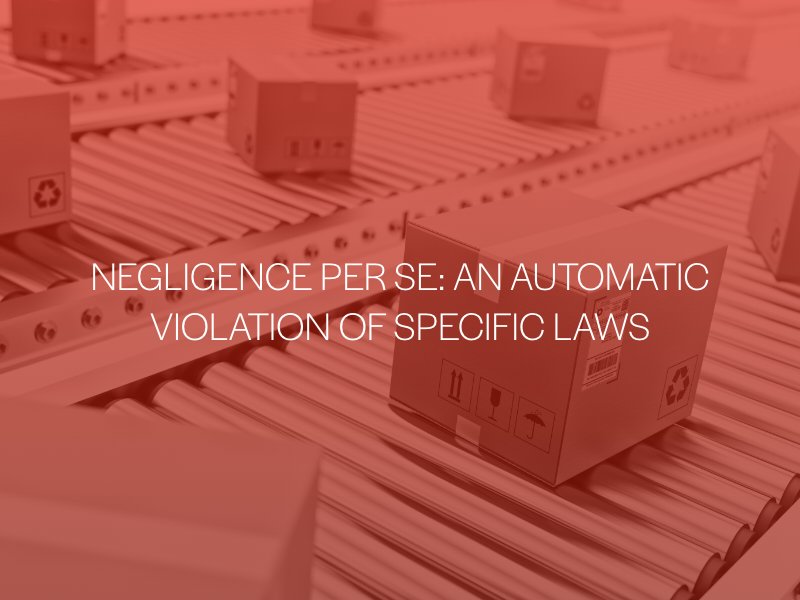The Difference Between Negligence and Negligence Per Se
Personal injury cases often hinge on legal concepts such as negligence and negligence per se. While related, these terms have distinct differences in their application and legal significance.
Negligence: A Breach of General Duty
Negligence is the basis of most personal injury claims, which occurs when an individual fails to uphold the expected standard of care, leading to harm or injury. This standard is often assessed by comparing the defendant’s (at-fault party’s) actions to what a reasonable person would do in similar circumstances. Negligence cases involve a thorough examination of the circumstances surrounding the incident to determine whether the defendant’s actions deviated from the expected standard.
As an example, suppose a driver named James was texting while driving, and as a result, he failed to notice the red light ahead and rear-ends the car in front of them. In this case, James’s actions demonstrate negligence.
Proving Negligence
To establish another party’s negligence and responsibility for your losses, you must typically prove the following elements:
- Duty of care: The defendant owed you a duty of care, implying that they had a legal obligation to act reasonably and prevent foreseeable harm (e.g., James owed a duty to others on the road to follow traffic laws).
- Breach of Duty: The defendant breached their duty by failing to meet the standard of care expected in the specific circumstances (e.g., James was texting while driving).
- Causation: The defendant’s breach of duty was the direct cause of your harm (e.g., James crashed into the victim’s car, causing significant property damage and injuries).
- Damages: You suffered actual damages or losses due to the defendant’s breach of duty (e.g., The victim was injured in the crash and required compensation for medical bills, lost income, pain and suffering, etc.)

Negligence Per Se: An Automatic Violation of Specific Laws
In contrast, negligence per se introduces a different dimension to personal injury cases. This concept comes into play when an individual violates a specific law or statute, and this violation is automatically considered negligent. This can simplify the legal process in certain cases, as the violation of a law is deemed sufficient to establish negligence, making it easier for the plaintiff to prove their case.
A classic illustration of negligence per se involves a motorist exceeding the posted speed limit. If a driver is caught speeding and subsequently causes an accident, the violation of the speed limit can be considered negligence per se.
The Key Differences Between The Two
One crucial difference lies in the evaluation process. In negligence cases, the court assesses the defendant’s actions against a broader, general standard of care. This involves considering what a reasonable person would do in similar circumstances. On the other hand, negligence per se cases focus on the violation of a specific law, making the assessment more straightforward. If the defendant breached a law, they are automatically considered negligent, irrespective of the circumstances.
Another distinction is the flexibility in negligence cases compared to the rigidity of negligence per se. In negligence cases, the standard of care can vary based on the specifics of each situation. However, negligence per se relies on the black-and-white nature of legal statutes. If the law is violated, negligence is established, regardless of any justifications or extenuating circumstances.
If you have been in a situation where you have been injured, it is in your best interest to call a Philadelphia personal injury attorney from Rosenbaum Injury Law. A lawyer can help you protect your rights and fight for the compensation that you deserve.
